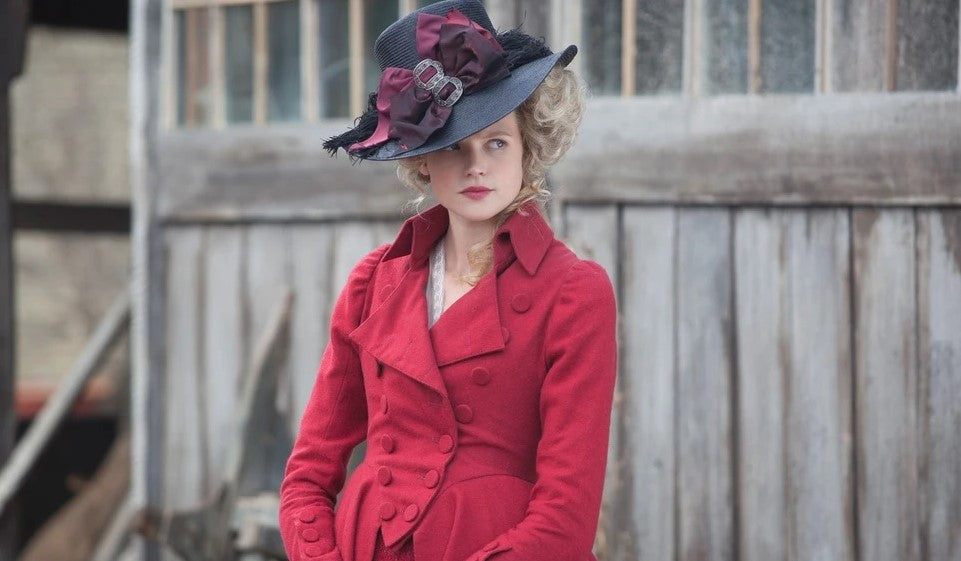
Getting Into Costume

Image: Gabriella Wilde as Caroline Penvenen in the 2015 BBC adaptation of Poldark, Mammoth Screen.
Last month, BAFTA and EMMY award-winning costume designer, Susannah Buxton, joined us for our virtual talk on historical dress. There wasn’t enough time to ask Susannah everything we wanted to know about her 30-year career, working on projects including Downton Abbey, Poldark, Burton and Taylor and Mr Wroe's Virgins, but she kindly agreed to this extra interview, where we discussed her pathway into costume design, her process and the annual not-for-profit Costume Symposium she set up for costume technicians and designers in the UK in 2017.

Image: Susannah Buxton and Penelope Wilton, Costume Symposium Talks day, LIPA 2019.
Why did you set up the Costume Symposium?
I few years ago I was asked to speak at a Costume Symposium held at the Opera House in Oslo. The three day event was inspirational and the young costume makers were thrilled to be together rather than working in isolation. It was interesting to see that as far as the workshops were concerned there was a surprising crossover; corset makers were in the glove making workshop, and tailors were learning about millinery.
We decided to run a similar event in the UK, particularly because these specialist skills are in high demand in the film industry yet are being lost at an alarming rate.
I wanted to support people working already as makers and potential designers, to encourage them to specialise in their chosen skill. Many theatres that were training grounds for costume makers no longer have permanent costume departments, but bring in freelance people as needed.
The Symposium is one day of lectures and two days of specialist workshops. Last year our second, we were over-subscribed. We are sadly having to postpone our event this year due to the virus, but hope to run again in the Spring.
How did you get into costume design?
I didn’t take a traditional route into costume design. My degree was in graphic design and illustration and it took me some years to realise how valuable the course had been to my work as a designer. I first worked as an exhibition designer in a Museum & Art Gallery and then spent a year painting scenery at the Bristol Old Vic Theatre. During that time I knew that I wanted to work in theatre, film or television and I was lucky enough to be asked to be a wardrobe assistant on a BBC Drama series about Mary Queen of Scots. I was accepted on a postgraduate degree in Theatre, Film & Television and then started my career in costume.
What is the process of creating a costume?
The most important start to a project is the visual research. Whatever the historical period I put together as much imagery as I can, culminating usually in mood boards. At the first fitting with the actor, I fill the room with colours, shapes and ideas to find a starting point, it might be a sleeve, a collar or even a texture. I then begin to build ideas, working with the actors who will of course have their own ideas for the characters we are creating.
Afterwards I show my designs in either rough drawings or actual pieces to the seamstress and pattern cutter, and discuss what is needed. It’s then we start sourcing fabrics and trim, this is both a joy and a concern as beautiful fabric is elusive and expensive.
Many people won’t realise that it can take six or seven specialist skills to create a costume, often including millinery, corsetry and tailoring. We might have five or six fittings if it’s a complicated costume and each piece can take at least a week to complete, depending on the intricacy of the design.
For more information visit costumesymposium.co.uk.